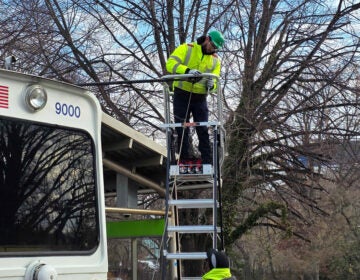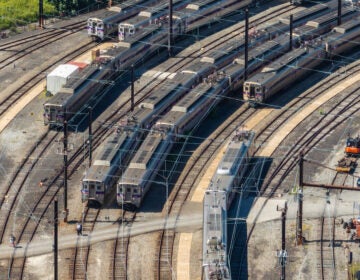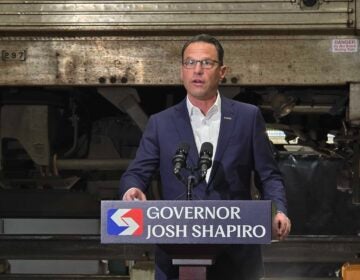SEPTA advances plan for NHSL extension to King of Prussia, but some residents aren’t on board
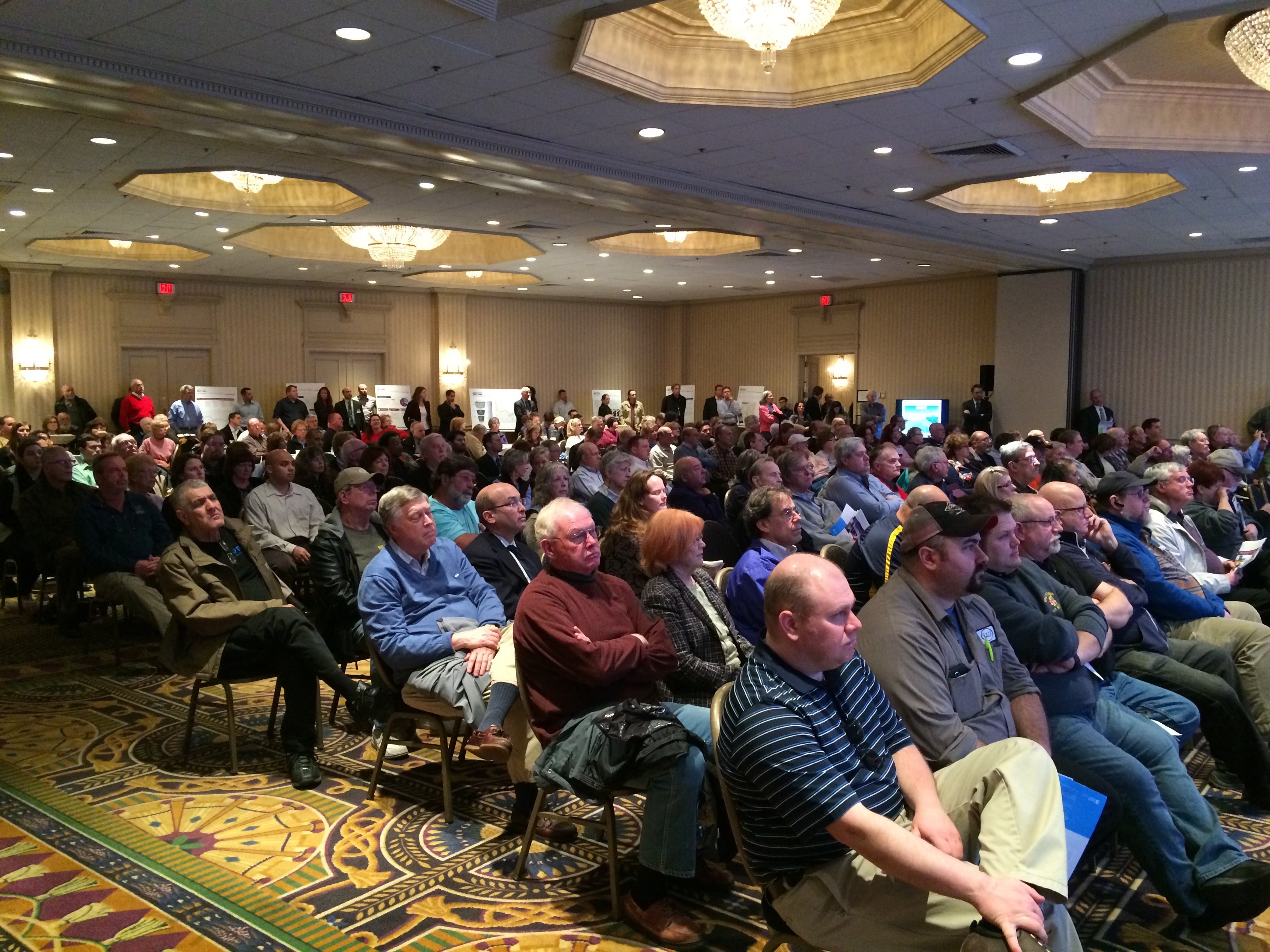
SEPTA recently took another laborious step in the long journey to extending the Norristown High Speed Line (NHSL) to King of Prussia, releasing a draft Environmental Impact Statement (EIS) in conjunction with the Federal Transit Administration (FTA).
SEPTA has spent the last year and a half preparing the 689-page report, which lays out the extension’s path, and trying to win over skeptical residents of the township best known for its massive mall.
The EIS narrows down the previous set of five alternatives for building the $1 billion to $1.2 billion extension to just one preferred route, which will branch out from the NHSL between the Hughes Park and Dekalb St. stations to follow a PECO service line, then follow the Pennsylvania Turnpike until the King of Prussia Mall, from where it would turn north along an industrial track and then follow 1st Avenue until the Valley Forge Casino Resort.
SEPTA tweaked this route in response to community feedback. Previous iterations of the route would have required the partial taking of four residents’ backyards. By moving the extension to the other side of the Turnpike, that’s being avoided entirely, as is King of Prussia’s 9/11 memorial.
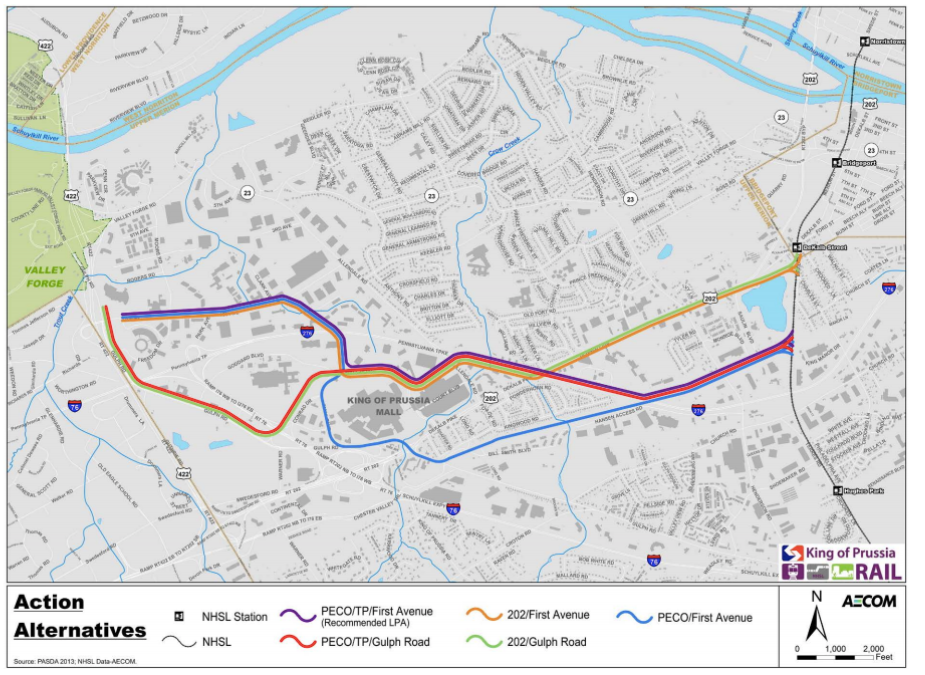
Liz Smith, SEPTA’s director of strategic planning and partnerships, said that the change came in response to community feedback. According to Smith, the NHSL extension would shave upwards of 30 minutes off of a SEPTA trip between Center City to the King of Prussia Mall, and would reduce traffic in township.
But, despite the modifications and promises of better commutes, some local residents still oppose the extension. Dan Cowhey, 33, runs the NO KOP Rail Facebook page. The school teacher and his wife bought a home in King of Prussia, not far from the extension’s proposed route, specifically because they wanted a quiet, suburban lifestyle. Cowhey said he’s worried they might lose that.
“A lot of people are concerned with too much change in King of Prussia in general,” said Cowhey. “I know the term ‘edge city’ is being thrown around [but] a lot of King of Prussia residents [don’t want] to become a city. They want to keep that little bit of small town feel that’s left in King of Prussia.”
But, according to Smith, it may be already too late to stop the area’s growth, so it’s better to use the rail line to manage it.
“There are already today parts of King of Prussia that, you can argue, look very similarly to a city,” said Smith. “King of Prussia is growing right now: there is about a billion dollars worth of development going on within the township.
“This project will allow that development to be concentrated in specific areas around the stations.”
The extension’s opponents also cite concerns over the rail line’s noise, the disruption during construction, and an increase in taxes — not for paying for the billion dollar project itself, but from all the attendant improvements that would accompany it. But, mostly, it’s a fear that the character of their suburban enclave would shift towards something more urban.
Mon., Nov. 13, 1 p.m.
DoubleTree Hotel Valley Forge
Jefferson Ballroom
301 West DeKalb Pike
King of Prussia, Pa 19406
Mon., Nov. 13, 5 p.m.
DoubleTree Hotel Valley Forge
Jefferson Ballroom
301 West DeKalb Pike
King of Prussia, Pa 19406
Wed., Nov. 15, 5 p.m.
Norristown Municipal Building
235 E. Airy Street
Norristown, PA 19401
SEPTA will hold three public hearings in November to gather feedback on the draft EIS. It will then spend most of 2018 and a large chunk of 2019 preparing the final EIS. That will be the critical moment for the project: Once the final EIS is set by SEPTA and approved by the FTA, the agency can then apply for federal new starts grants to cover up to half of the construction costs. It’s unlikely the project could advance without federal funds.
The languid pace of the project, which started initial planning back in 2012, can be attributed to federal bureaucracy. SEPTA is pursuing New Starts funding from the FTA to cover up to half of the construction costs, and the planning process itself is being funded through a separate FTA grant. Combined, that means there are lots of regulatory T’s to cross and I’s to dot, along with mandatory comment periods and back-and-forth correspondence with Washington, all slowing down the project’s pace.
According to an analysis by the Economy League of Greater Philadelphia included in the draft EIS, the NHSL extension would generate $1.1 to 1.3 billion in total construction spending in the region, and save drivers and bus riders between 1.8 and 2.3 million hours a year in traffic time. Time is money, so that works out to $39 to $49.2 million a year in savings.
The Economy League supports the KOP extension, as does a newly formed coalition of regional business leaders, the King of Prussia Rail Coalition. They argue that the extension would connect the region’s two largest employment centers — Center City and University City — with King of Prussia, the region’s third largest employment hub, and thereby strengthen the entire region’s desirably as a business location.
The Economy League’s analysis also suggests that the extension would reduce driving in the area by 14.6-18.4 million vehicle miles traveled (VMT) per year. According to PennDOT, drivers in Montgomery County, rack up 17.9 million VMT per day, which means the project would reduce traffic by about 0.3 percent.
The report also estimates that 1,200 indirect jobs would be created thanks to the project.
WHYY is your source for fact-based, in-depth journalism and information. As a nonprofit organization, we rely on financial support from readers like you. Please give today.




